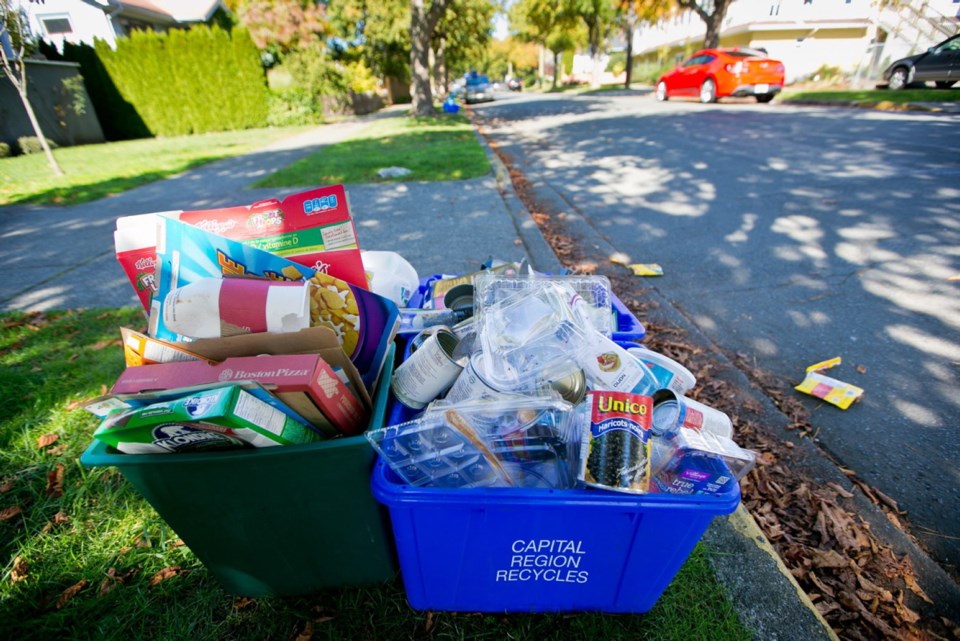Changes to China’s importation rules mean there’s virtually no market for some of the material collected through commercial or multi-family residential recycling programs, and it’s increasingly ending up in the landfill, Capital Regional District staff say.
While there are still markets for materials collected curbside through the residential blue-box program, the loss of the China market over the past 18 months has made it difficult to find a destination for materials collected from commercial buildings or multi-family residential buildings, where contamination rates are much higher.
“Until global recycling markets adjust to the closure of Chinese markets, some commercial and multi-family recyclables that were previously exported to China will continue to need to be disposed of due to high levels of contamination and an absence of markets,” Russ Smith, senior manager of environmental resource management, said in a report that went to the CRD’s environment committee this week.
Smith said the quantities are small and should not have a measurable effect on the region’s per capita disposal rate, but he notes that if the lack of markets for recyclable materials persists, the CRD might have to adjust its bylaw banning certain materials at the dump.
Landfill disposal bans have historically only been enacted when viable recycling alternatives exist, he said.
Smith told committee members the residential blue-box program and Recycle B.C. program aren’t experiencing the same challenges securing markets, “partially because they are very clean residential streams and they’ve done a good job of managing those.”
Committee members agreed that staff should consult with waste haulers to get feedback on potential changes to the bylaw that would better reflect the reality of recycling markets.
CRD staff reported that many private haulers had stopped collecting glass from multi-family residences because communal collection leads to high contamination rates — if it’s incorrectly placed with other recyclables, glass can break into small pieces that can turn an entire load of otherwise recyclable materials into garbage.
Meanwhile, CRD directors are a step closer to banning Styrofoam containers.
Members of the CRD’s environment committee are recommending the board direct staff to report back with options for creating a bylaw banning single-use Styrofoam containers and cups.
Saanich Coun. Ned Taylor, who sponsored the call for the initiative, said Styrofoam is a major source of marine debris affecting aquatic life and other forms of wildlife.
“Styrofoam has many negative impacts [and] environmental concerns. For example, bits of Styrofoam were seen on our beaches here in the CRD, in our streams and other areas.”
Discarded Styrofoam also litters parks and is caught in storm drains, he said.
Taylor noted that businesses want consistency and a model bylaw that could be used by any municipality provides that consistency.
Some committee members noted the region likely would have difficulty blocking Styrofoam used in packing items such as electronics.



